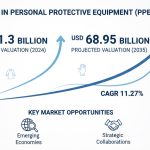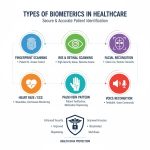Overview of Agricultural Fumigants Market
The agricultural fumigants market represents a critical segment within the global crop protection industry, focusing on specialized pesticides designed to eliminate soil-borne pests, pathogens, and weeds that threaten agricultural productivity. These chemical compounds work by releasing gaseous forms when applied to soil, creating a toxic environment for harmful organisms while preserving crop integrity. The market’s robust growth trajectory, with valuations increasing from USD 2.3 billion in 2022 to a projected USD 3.1 billion by 2030, reflects the increasing global demand for food security and sustainable agricultural practices. Key driving factors include the rising global population necessitating enhanced crop yields, growing awareness of soil health management, increasing adoption of precision agriculture techniques, and the need to combat resistant pest populations. Additionally, expanding agricultural activities in developing regions and the introduction of eco-friendly fumigant formulations continue to propel market expansion across diverse geographical markets.
Get a Sample Copy:- https://www.vantagemarketresearch.com/agricultural-fumigants-market-1053/request-sample
Market Dynamics
The agricultural fumigants market operates within a complex ecosystem influenced by multiple interconnected factors that shape its growth trajectory and competitive landscape. Supply-side dynamics are primarily driven by technological advancements in fumigant formulation, manufacturing capabilities of key industry players, and regulatory compliance requirements that govern product development and distribution. Major chemical companies invest heavily in research and development to create more effective, environmentally sustainable fumigant solutions that meet evolving agricultural needs while adhering to stringent safety standards. Demand-side factors include the growing global population’s increasing food requirements, expansion of commercial farming operations, rising awareness about soil-borne disease management, and the adoption of integrated pest management strategies by modern farmers.
Economic factors significantly influence market dynamics, including commodity price fluctuations, agricultural subsidies, and farmers’ purchasing power in different regions. Environmental concerns and regulatory pressures continue to reshape the market, with governments worldwide implementing stricter guidelines for chemical pesticide usage, pushing manufacturers toward developing bio-based and less toxic alternatives. Climate change impacts, such as shifting pest populations and changing agricultural zones, create new demand patterns for specific fumigant types. The market also experiences seasonal variations aligned with planting and harvesting cycles, requiring manufacturers to maintain flexible production and distribution strategies to meet peak demand periods effectively.
Top Trends
The agricultural fumigants market is experiencing several transformative trends that are reshaping industry practices and product development strategies. One of the most significant trends is the shift toward sustainable and environmentally friendly fumigant formulations, driven by increasing regulatory scrutiny and consumer demand for residue-free agricultural products. Manufacturers are investing in bio-based fumigants derived from natural sources, which offer effective pest control while minimizing environmental impact and reducing health risks for agricultural workers. Precision application technology represents another major trend, with the integration of GPS-guided equipment, drone-based application systems, and smart sensors enabling farmers to apply fumigants with greater accuracy and efficiency, reducing chemical waste and optimizing treatment outcomes.
The trend toward integrated pest management systems is gaining momentum, where fumigants are used as part of comprehensive pest control strategies that combine chemical, biological, and cultural control methods. This approach maximizes effectiveness while minimizing chemical dependency and environmental impact. Digital agriculture and data analytics are increasingly influencing fumigant usage patterns, with farmers utilizing soil monitoring systems, weather data, and predictive analytics to determine optimal application timing and dosage rates. Additionally, there is a growing trend toward specialized fumigant formulations designed for specific crops and soil types, reflecting the industry’s move toward customized agricultural solutions that address unique regional and crop-specific challenges while maintaining high efficacy standards.
Top Report Findings
- The soil fumigants segment dominates the market, accounting for approximately 65% of total revenue due to widespread adoption in high-value crop cultivation and greenhouse operations
- Methyl bromide alternatives, including chloropicrin and 1,3-dichloropropene, are experiencing rapid growth following international phase-out agreements and regulatory restrictions
- The vegetables and fruits segment represents the largest application area, driven by intensive cultivation practices and high economic value of crops requiring soil sterilization
- North America maintains market leadership with over 40% market share, supported by advanced agricultural infrastructure and high adoption rates of modern farming technologies
- Asia Pacific emerges as the fastest-growing regional market, with CAGR exceeding 5.5% due to expanding agricultural activities and increasing food security concerns
- Pre-plant soil treatment applications account for more than 70% of fumigant usage, reflecting the critical importance of soil preparation in successful crop cultivation
- The warehouse and storage fumigation segment shows steady growth, driven by increasing global grain trade and post-harvest loss prevention initiatives
- Regulatory compliance costs continue to rise, with manufacturers investing significantly in product registration and safety data development across multiple jurisdictions
Challenges
The agricultural fumigants market faces numerous significant challenges that impact industry growth and operational efficiency. Stringent regulatory frameworks present the most substantial hurdle, with government agencies worldwide implementing increasingly restrictive guidelines for chemical pesticide registration, usage, and environmental impact assessment. These regulations require extensive safety data generation, costly compliance procedures, and lengthy approval processes that can delay product launches and increase development costs substantially. Environmental and health concerns surrounding fumigant applications create additional challenges, as public awareness about chemical residues in food products and potential health risks for agricultural workers continues to grow, leading to consumer pressure for alternative pest control methods.
Technical challenges include the development of pest resistance to commonly used fumigants, necessitating continuous research and development investments to create new active ingredients and formulation technologies. The volatile nature of fumigant chemicals presents storage, transportation, and application difficulties, requiring specialized equipment and trained personnel to ensure safe and effective usage. Market access barriers in developing countries, including inadequate distribution infrastructure, limited farmer education, and economic constraints, restrict market expansion opportunities. Additionally, the seasonal nature of agricultural activities creates demand fluctuations that complicate production planning and inventory management for manufacturers, while competition from biological and organic pest control alternatives continues to challenge traditional chemical fumigant market share.
Opportunities
The agricultural fumigants market presents substantial growth opportunities driven by evolving agricultural practices and technological advancements. The increasing global focus on sustainable agriculture creates significant opportunities for manufacturers to develop eco-friendly fumigant formulations that meet environmental standards while maintaining pest control efficacy. Bio-based fumigants derived from plant extracts and naturally occurring compounds represent a promising growth avenue, as they address regulatory concerns and consumer preferences for sustainable agricultural inputs. Precision agriculture technology integration offers opportunities to enhance fumigant application efficiency through smart delivery systems, soil sensors, and data-driven application strategies that optimize treatment outcomes while minimizing chemical usage and environmental impact.
Expanding agricultural activities in emerging markets, particularly in Asia Pacific, Latin America, and Africa, present significant market expansion opportunities as farmers adopt modern pest management practices to improve crop yields and quality. The growing greenhouse and controlled environment agriculture sectors offer specialized market niches for targeted fumigant products designed for enclosed growing systems. Post-harvest applications, including grain storage and warehouse fumigation, represent underexplored opportunities as global food trade increases and food security concerns drive demand for effective preservation solutions. Strategic partnerships with agricultural technology companies, distribution networks, and research institutions can accelerate market penetration and product development, while government initiatives supporting agricultural modernization in developing countries create favorable conditions for market growth and technology adoption.
Key Questions Answered in Agricultural Fumigants Market Report
- What are the primary factors driving growth in the global agricultural fumigants market?
- How do regulatory changes impact fumigant product development and market access strategies?
- Which application segments offer the highest growth potential for fumigant manufacturers?
- What are the key technological innovations shaping the future of soil fumigation practices?
- How do regional market dynamics differ across North America, Europe, and Asia Pacific?
- What strategies are leading companies implementing to address environmental sustainability concerns?
- Which crop types demonstrate the strongest demand for specialized fumigant treatments?
- How are precision agriculture technologies influencing fumigant application methods and market demand?
- What are the main challenges facing new entrants in the agricultural fumigants market?
- How do economic factors and commodity prices affect fumigant adoption rates among farmers?
- What role do biological alternatives play in shaping competitive dynamics within the fumigant market?
- How are supply chain disruptions and raw material availability impacting market growth?
Regional Analysis
The global agricultural fumigants market exhibits distinct regional characteristics shaped by agricultural practices, regulatory environments, and economic conditions across different geographical areas. North America maintains its position as the dominant regional market, accounting for the largest share of global fumigant consumption due to its advanced agricultural infrastructure, large-scale commercial farming operations, and high adoption rates of modern pest management technologies. The United States leads regional demand, driven by extensive cultivation of high-value crops including vegetables, fruits, and nuts that require intensive soil treatment. Canadian markets show steady growth, particularly in greenhouse production and specialty crop cultivation sectors.
Asia Pacific emerges as the fastest-growing regional market, experiencing rapid expansion driven by increasing food security concerns, expanding agricultural land use, and modernization of farming practices across developing economies. China represents the largest market within the region, with substantial government investments in agricultural productivity enhancement and sustainable farming initiatives driving fumigant adoption. India and Southeast Asian countries demonstrate significant growth potential as farmers transition from traditional to commercial agriculture methods. Japan and South Korea maintain mature markets with focus on high-efficiency, environmentally sustainable fumigant applications.
Europe presents a mature but evolving market characterized by stringent regulatory frameworks and strong emphasis on environmental sustainability and food safety standards. The European Union’s comprehensive pesticide regulations influence product development and market access strategies, with increasing preference for bio-based and reduced-risk fumigant formulations. Germany, France, and the Netherlands lead regional demand, supported by intensive horticultural production and advanced greenhouse cultivation systems that require specialized soil treatment solutions.
Conclusion
The agricultural fumigants market stands at a critical juncture, balancing traditional pest control needs with evolving sustainability requirements and technological innovations. With a projected growth trajectory reaching USD 3.1 billion by 2030, the market demonstrates resilience and adaptability in addressing global food security challenges while responding to environmental and regulatory pressures. Success in this dynamic market requires continuous innovation, strategic regional positioning, and commitment to sustainable agricultural practices that benefit farmers, consumers, and the environment alike.
![[Market Research Reports] – Research Google News Blog | VMR.Biz](https://www.vmr.biz/wp-content/uploads/2022/12/logo-removebg-preview.png)











